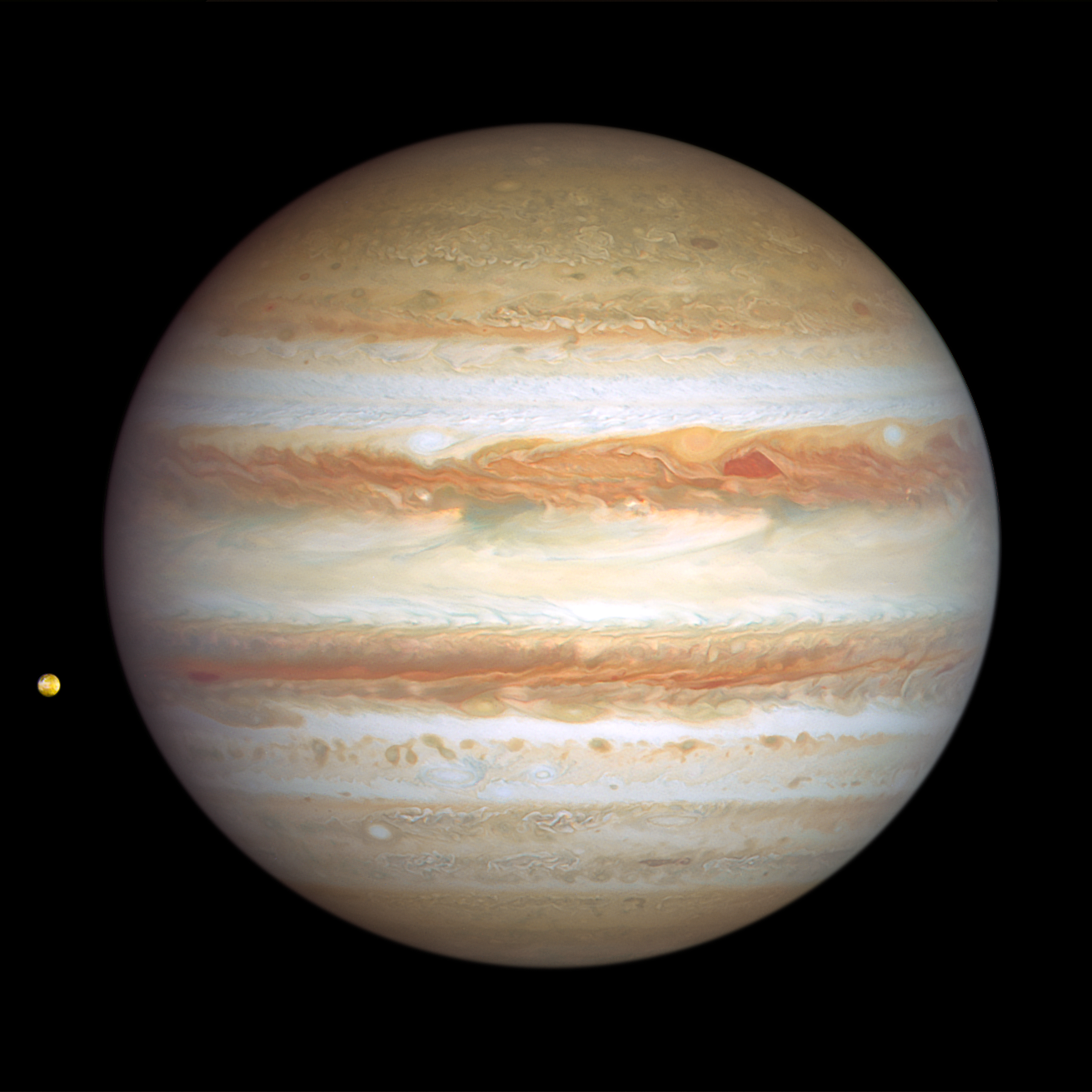
Hubble Image of Jupiter’s Storm Activity and Io Taken January 6, 2024
A pair of storms: a deep red cyclone and a reddish anticyclone, appear to be next to each other at right of center. They look so red that at first glance, it looks like Jupiter skinned a knee. These storms are rotating in opposite directions, indicating an alternating pattern of high- and low-pressure systems. For the cyclone, there’s an upwelling on the edges with clouds descending in the middle, causing a clearing in the atmospheric haze. The storms are expected to bounce past each other because their opposing clockwise and counterclockwise rotation makes them repel each other. Toward the left edge of the image is the innermost Galilean moon, Io – the most volcanically active body in the solar system, despite its small size (only slightly larger than Earth's moon). Hubble resolves volcanic outflow deposits on the surface. Hubble's sensitivity to blue and violet wavelengths clearly reveals interesting surface features. In 1979 NASA's Voyager 1 spacecraft discovered Io's pizza-like appearance and volcanism, to the surprise of planetary scientists because it is such a small moon. Hubble picked up where Voyager left off by keeping an eye on restless Io year by year.
